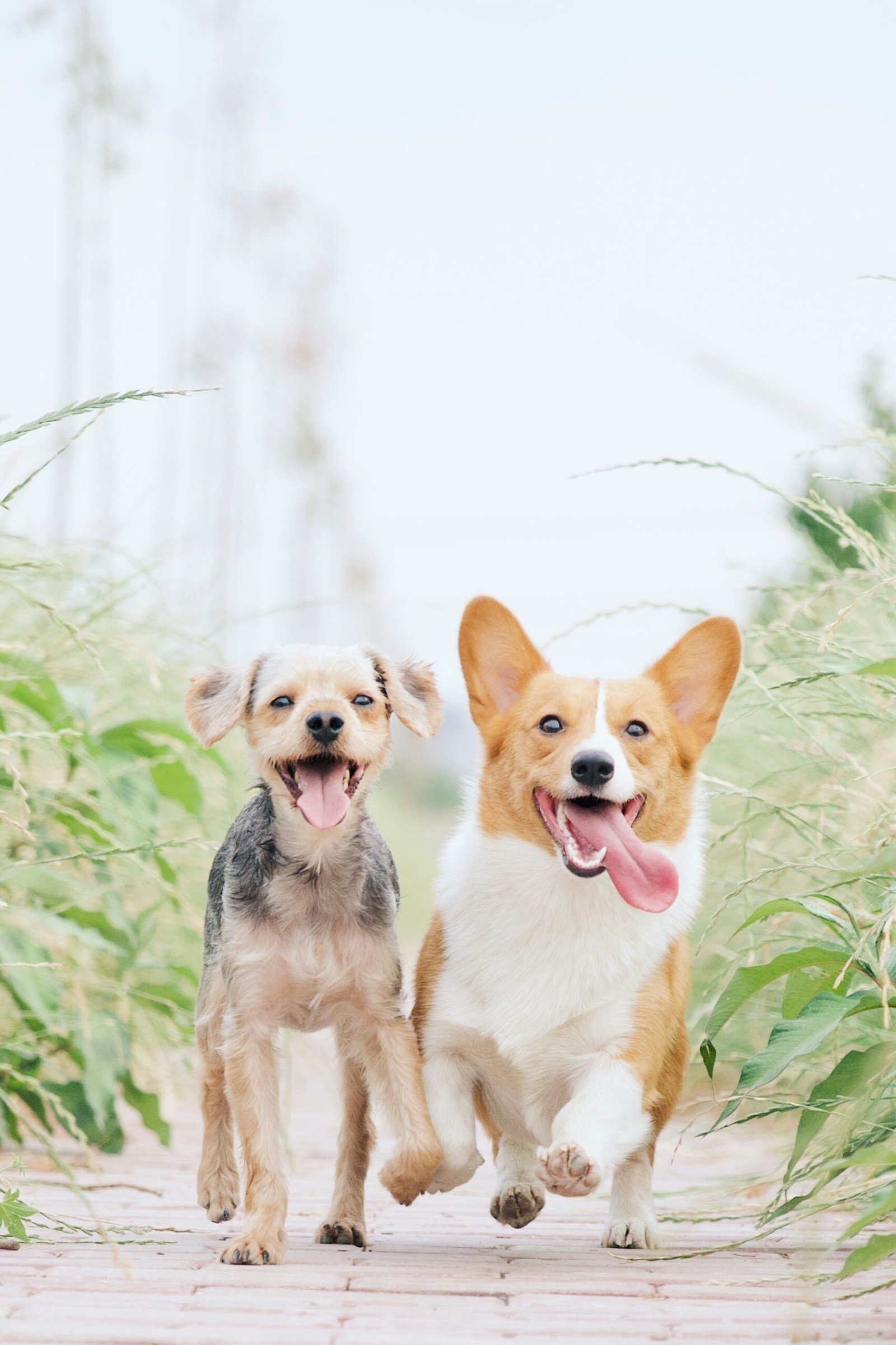Spring Pet Care
As spring arrives, warmer weather and blooming flowers bring increased activity for pets. However, this season also ushers in pests such as fleas, ticks, and mosquitoes, posing significant health risks. Protecting your pets from these pests is crucial. Consider using veterinarian-recommended flea and tick prevention treatments. Regularly check your pets for any signs of infestation, especially after outdoor activities.
Grooming becomes essential in spring to manage shedding and detect any skin issues or parasites. Regular brushing helps remove loose fur and reduces the risk of matting, which can hide skin problems. Bathing your pet with a gentle shampoo can also help maintain a healthy coat and skin. During grooming sessions, inspect your pet’s skin for irritations, redness, or unusual lumps, and consult a vet if any abnormalities are found.
Spring is an ideal time to update your pet’s vaccinations and schedule a comprehensive vet check-up. After the winter months, a health assessment ensures that your pet is in optimal condition. Vaccinations protect against diseases that are more prevalent in warmer months, such as Lyme disease, which is spread by ticks.
Allergies can affect both pets and their owners during spring. Common allergens include pollen, grass, and mold. To manage allergies, keep your home clean by vacuuming regularly and washing your pet’s bedding. If your pet shows signs of allergies, such as excessive scratching, licking, or sneezing, consult your veterinarian for appropriate treatment options.
Spring also offers an opportunity for safe outdoor activities. Enjoy the pleasant weather by taking your dog for walks in pet-friendly parks or playing fetch in the backyard. For indoor cats, consider setting up a screened-in porch or a window perch to let them enjoy fresh air safely. Always ensure that your outdoor space is secure to prevent escapes and encounters with other animals.
Summer Pet Care
The summer season brings a unique set of challenges for pet owners, particularly when it comes to keeping cats and dogs cool and hydrated. One of the most significant risks during this time is heatstroke, which can be life-threatening if not promptly recognized and treated. Symptoms of heatstroke in pets include excessive panting, drooling, red or pale gums, rapid heartbeat, lethargy, and in severe cases, collapse or seizures. If you notice any of these signs, it is crucial to move your pet to a cooler area and seek veterinary attention immediately.
Ensuring that your pets have access to plenty of fresh water and shaded areas is essential, especially for those who spend time outdoors. Setting up shaded spots in your yard and replenishing water bowls frequently can help keep your pets cool and comfortable. For indoor pets, consider using fans, air conditioning, or cooling mats to maintain a pleasant environment. These measures can significantly reduce the risk of overheating.
One of the most dangerous situations for pets during the summer is being left in hot cars. Even with windows cracked, the temperature inside a vehicle can rise rapidly, leading to fatal heatstroke within minutes. If you need to travel with your pet, plan your errands around cooler times of the day, or use pet-friendly transportation options that ensure their safety.
Sun protection is another critical aspect of summer pet care. Just like humans, pets can suffer from sunburn, particularly those with light-colored fur or exposed skin. Using pet-safe sunscreen on vulnerable areas and avoiding walks during peak sun hours can help prevent sunburn. Additionally, hot pavement can burn the pads of your pet’s feet, so it is best to walk them during cooler parts of the day or provide protective booties.
Finally, adjusting your pet’s exercise routine is vital to prevent overheating. Opt for shorter, more frequent walks, and avoid rigorous activities during the hottest parts of the day. By taking these precautions, you can ensure your pets stay safe and comfortable throughout the summer months.
Autumn Pet Care
As the crisp air of autumn settles in and the leaves begin to fall, pet owners must adapt their care routines to ensure their furry friends remain comfortable and healthy. The changing weather often brings a shift in your pet’s activity levels, necessitating adjustments in their diet. As pets may be less active during cooler months, consider moderating their caloric intake to prevent weight gain. Conversely, for pets that remain highly active, especially dogs that enjoy outdoor activities such as hiking, ensuring a balanced diet that supports sustained energy levels is vital.
Autumn is also a time for continued vigilance against pests. Although the peak season for many insects has passed, ticks remain active well into the fall. Regularly inspect your pet for ticks and continue using preventative treatments to avoid infestations and tick-borne diseases. This season also heralds an increase in shedding as pets prepare their winter coats. Regular grooming is essential to manage shedding and to maintain a healthy coat. Brushing your pet frequently can help remove loose fur and reduce the risk of matting.
Outdoor activities can be particularly enjoyable during autumn, but it is important to be aware of seasonal hazards. When hiking or walking, keep an eye out for mushrooms and toxic plants that may be harmful to pets if ingested. Ensure your pet stays on marked trails to avoid these dangers. Additionally, as the weather cools, pets need warm and dry shelter. Whether indoors or in an outdoor kennel, make sure their living space is insulated and protected from the elements. Blankets or pet-safe heating pads can provide additional warmth as temperatures drop.
By taking these precautions and adjusting your pet care routine to the seasonal changes, you can ensure your cat or dog remains healthy and comfortable throughout the autumn months.
Winter Pet Care
Winter can be particularly challenging for pets, especially those that spend significant time outdoors. Ensuring your pet has proper shelter and warmth is crucial. Insulated dog houses and heated beds can provide much-needed comfort, but for many pets, the best solution is to stay indoors during extreme cold. When venturing outside, consider using pet-safe booties or paw balms to protect your pet’s paws from ice, snow, and salt, which can cause irritation and injury.
Maintaining a healthy diet and regular exercise routine is essential, even in colder weather. Pets often require more calories in winter to maintain their body heat, so consult your veterinarian to determine the appropriate diet. Indoor activities, such as interactive toys and games of fetch, can help keep pets engaged and active when outdoor exercise is limited.
Another critical aspect of winter pet care is safeguarding your pets from potential hazards. Antifreeze is highly toxic to animals, so be vigilant about any spills and store it out of reach. Additionally, space heaters and fireplaces can pose risks; ensure these heat sources are pet-proofed to prevent accidental burns or fires.
Recognizing the signs of hypothermia and frostbite in pets is vital. Symptoms of hypothermia include shivering, lethargy, and difficulty breathing, while frostbite may present as pale or discolored skin, swelling, and blisters. If you observe any of these signs, seek veterinary care immediately.
By taking these precautions, you can help ensure your pet remains safe and comfortable throughout the winter months. Proper shelter, diet, exercise, and awareness of potential hazards will contribute to your pet’s overall well-being during the cold season.


